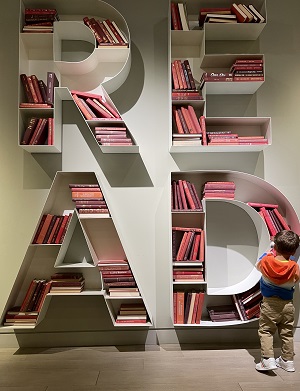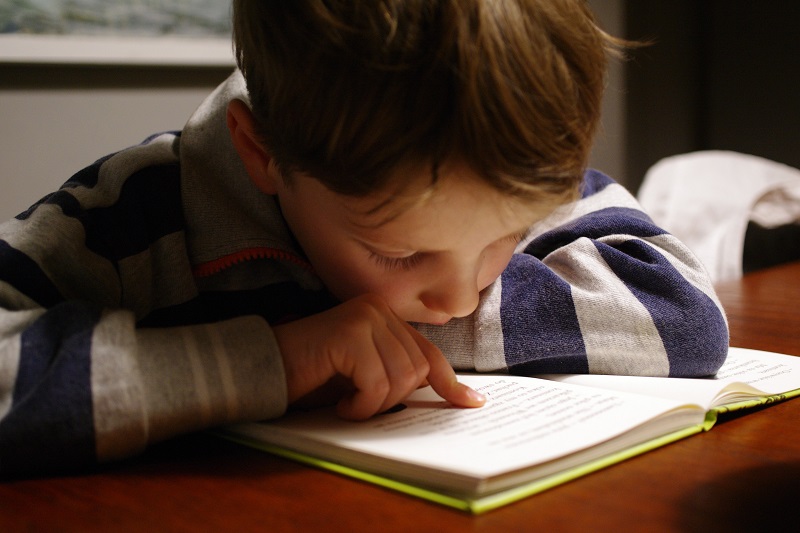The right to read
September 8, 2022
Share

It’s been ten years since the Supreme Court of Canada released a decision recognizing reading as an essential human right. However, providing literacy education and access for all children, including those with reading disabilities and disorders like dyslexia, which make it difficult to process text, is a complex goal. Earlier this year, a report by the Ontario Human Rights Commission (OHRC) called for changes in how the province approaches literacy education. The report made headlines as it was scrutinized by experts across the country.
To recognize World Literacy Day (September 8), we spoke to Pamela Beach, a professor in Queen’s Faculty of Education, about the OHRC report and its main findings. Dr. Beach also talked about her research in literacy education and some of the insights around literacy she has gathered from her work with teachers across Ontario.
What are the highlights of the Ontario Right to Read Inquiry Report?
This has been a work in progress for several years now. The inquiry heard the experiences and difficulties of many families and individuals with reading disabilities like dyslexia and found that Ontario’s public education system has been unable to consistently support students with dyslexia.
One of the report’s recommendations I would highlight is the need for screening in the early years. Screening tools or early assessments can work as a cautionary flag to teachers and educators, signaling that a student might be struggling in a foundational area like phonological and phonemic awareness. This way, educators can start some early interventions to assist students in need. This is already happening in school boards, although inconsistently, across Ontario.

How?
In my research, I am interested in how elementary teachers learn about literacy and reading instruction. I talk to many teachers about how they integrate this learning into their programs, and I've been fortunate to be in a lot of different classrooms. There are teachers and schools doing an amazing job and already including the recommended screening tools in their practice.
For example, they are looking at the role of phonemic awareness, that is, the ability to identify and manipulate the smallest sounds in spoken language. Research shows that phonemic awareness is one of the more difficult areas for individuals with dyslexia. And these schools are already using sound assessments to identify students that might be struggling with identifying individual sounds in words, and then working with these students to overcome these difficulties.
Is it a consensus that, the earlier you start interventions, the easier the process will be?
Absolutely. Early intervention gives us the best results.
A lot of the vocabulary that students get is indirect, but they also acquire vocabulary through reading – words that don't come up in our everyday speech but are in our books and other documents. By the time children are in Grade 2 or 3, they are expected to have quite a large vocabulary that they recognize, read, and understand. At that point, anyone who is struggling with basic components of phonemic awareness and letter/sound association is falling behind already.
What are the main gaps in assisting students with dyslexia and other reading disabilities?
A general classroom teacher can use good evidence-based instruction to identify reading difficulties and assist students. But some students will still need more intensive intervention to reach their potential, which might include one-on-one work with a special education teacher.
Again, some schools are really doing wonderful things with the resources they have, including training teachers in and already implementing the Empower Reading program. We need to continue to find ways to best support teachers in this journey.

How do teachers currently seek instruction or training on literacy education?
Over the last several years I’ve researched teachers’ professional learning as it relates to literacy instruction. I’ve looked at how teachers use multimedia online resources in self-directed learning, with very consistent findings. Teachers are always looking for ways to improve their knowledge by ensuring that they are using evidence-based resources.
Working with pre-service teachers, I’ve found that they are interested in both theoretical information and practical training. I think both are essential: you need to understand the theory and background information to make decisions in your classroom.
But also, looking for evidence-based resources can be a struggle because of how research is sometimes presented. We need to continue to mobilize research findings in a way that respects and attracts teachers.
What are your current research goals?
My next research project is taking more of an international perspective. I'm looking at alternative approaches to early years education, like Montessori or Reggio Emilia in Italy, and how literacy is integrated into these approaches. Of course, they stem from different languages and that makes a difference, but they've still been adapted to English language contexts, as well as to other languages. There are also interesting alternative programs being used in other countries, like England, China, and Japan, as well as across the Canadian provinces. I want to understand what these different programs are doing, what they have in common, and what materials they are using to support their students in literacy.